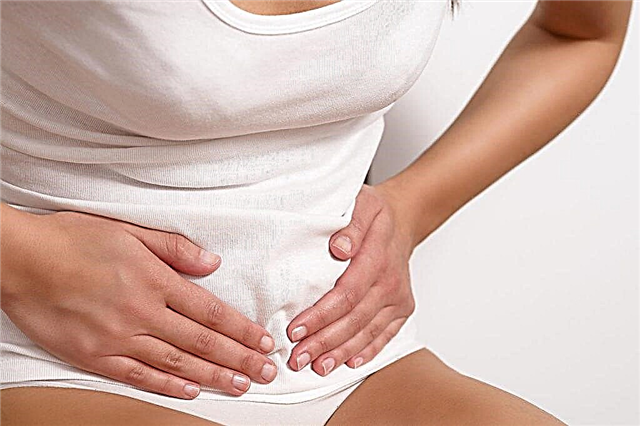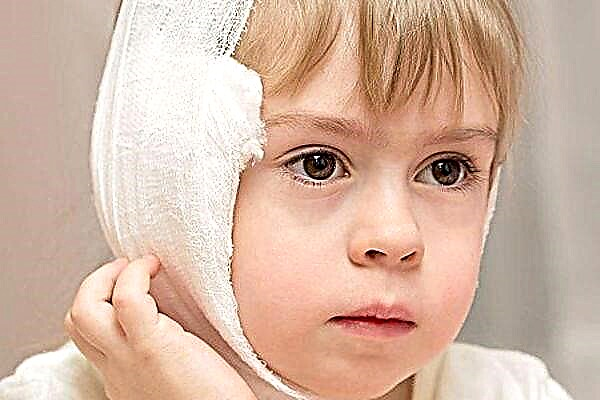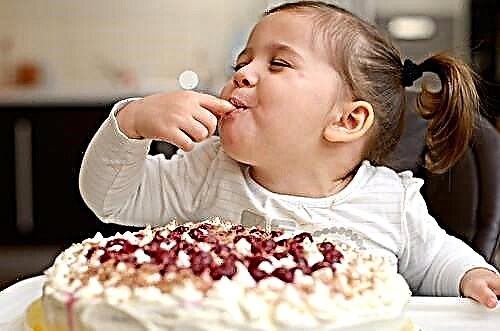
If a child has been diagnosed with bacteria in the mouth or throat area, topical agents are most often used in treatment. One of them is Ingalipt, which contains several active compounds at once that affect microbes and the inflammatory process. How does the child's body tolerate this medication when Ingalipt is prescribed to children and how is it used correctly?

Release form
Ingalipt is produced by several pharmaceutical companies, including Pharmstandard-leksredstva, Binnopharm, Altayvitamins, Vips-med and others. The medicine is released in the form of an aerosol, which is used exclusively locally. The volume of one aluminum or glass bottle varies from manufacturer to manufacturer and can be 15, 20, 25, 30 or 50 milliliters.
Inside the balloon is a yellow transparent liquid, which can be either a light shade or a dark yellow color. It comes out of the tip in the form of a jet that smells strongly of menthol and thymol.

Composition
Ingalipt is a multicomponent medicine. Its action is provided by the following ingredients:
- Sodium sulfanilamide, also called soluble streptocide.
- Sulfathiazole sodium pentahydrate.
- Peppermint leaf oil.
- Eucalyptus leaf oil.
- Thymol.
Sulfanilamide and sulfathiazole are presented in 30 ml of the drug at a dosage of 750 mg, and each of the oils and thymol are contained in such a volume of medication at 15 mg. Among the auxiliary components of the aerosol can be seen glycerin, purified water, ethyl alcohol with a concentration of 95%, sucrose, nitrogen and polysorbate 80. Some manufacturers replace sucrose with sodium saccharin.

Operating principle
The main action of Ingalipt is the antimicrobial effect, which is provided by sulfonamides in its composition. They affect both gram-positive microorganisms and many gram-negative bacteria that cause diseases of the oral cavity and pharynx. Such components do not act on viruses, therefore, an aerosol is not prescribed for ARVI.
The presence in the medicine of mint and eucalyptus oils, as well as thymol, additionally affects microbes and gives the drug antifungal activity, due to which Ingalipt is able to affect candida fungi. In addition, these ingredients have a slight pain relieving effect and reduce inflammation.
After spraying the drug in the oral cavity, its components settle on the mucous membrane. The result will be a decrease in pain, neutralization of pathogenic bacteria and cleaning the oral cavity from purulent plaque. The use of Ingalipt helps to reduce the intensity of cough and quickly eliminate the symptoms of intoxication.

Indications
Ingalipt is prescribed for various diseases of the oropharynx. Such a local drug is in demand:
- With tonsillitis.
- With laryngitis.
- With aphthous stomatitis.
- With pharyngitis.
- With ulcerative stomatitis.
- With angina.

From what age is it allowed to take?
Since Ingalipt is available in aerosol form, it is not prescribed for children under 3 years of age. Spray use at an early age (eg, a one year old child) presents danger to the toddler and can provoke laryngospasm. For this reason, babies under 1 year old and at the age of 1-3 years are prescribed other medications that are not contraindicated for these age categories.
But even if the child is 3 years old, it is undesirable to use Ingalipt in his treatment without consulting a pediatrician. The doctor will examine the little patient and determine if an aerosol can be used. The drug is prescribed only if the baby does not resist the introduction of the spray into the oral cavity and already knows how to hold his breath.

Contraindications
Inhalipt is not prescribed for children who have an increased sensitivity to streptocide, eucalyptus oil, thymol, or any other aerosol ingredient. For adults, the medication is not recommended when carrying a child or breastfeeding.

Side effects
Ingalipt treatment causes discomfort in the mouth and throat in some children. Patients complain of perspiration or burning sensation, but often these side effects are short-lived. In addition, in rare cases, the aerosol can provoke allergies, such as itchy skin or rashes. If such an adverse reaction manifests itself after the first use of the drug, you need to cancel the drug and show the child to the pediatrician. The doctor will decide whether it is advisable to continue the treatment or whether it is better to replace Ingalipt with another medication with a similar effect.

Instructions for use and dosage
- Remove the protective cap from the can and install the spray nozzle supplied with the bottle.
- Give the child boiled water so that the little patient rinses out his mouth before using Ingalipt. If necessary, you can also cleanse the mucous membrane from purulent plaque with a cotton swab.
- Insert the nebulizer into the child's mouth and, asking the patient to hold their breath, press the nozzle for 1-2 seconds. While doing this, hold the bottle upright.
- Tell your child to hold the medicine in his mouth for about 5-7 minutes.
- Irrigate the affected area 3 or 4 times a day.
- To avoid clogging the spray opening, purge the nozzle after each treatment or keep it in a glass filled with clean water between treatments.
- The duration of treatment with Ingalipt is usually 5-7 days.

Overdose
If a child accidentally swallows too much Ingalipt, it will lead to nausea and may cause vomiting. Since the ingredients of the medicine do not have a specific antidote, in case of malaise due to an overdose, the doctor will prescribe supportive symptomatic treatment for the little patient.

Interaction with other drugs
In the annotation to Ingalipt, it is noted that such a medicine can be combined with many other medicines, including other antimicrobial local agents. This combination will be more effective for oropharyngeal infections, as the spectrum of action of the drugs will increase.

Terms of sale
There are no difficulties with buying Ingalipt at the pharmacy, since it is an over-the-counter drug. The average price of a bottle containing 30 ml of the medicine is 70-80 rubles.

Storage conditions and shelf life
It is recommended to keep Ingalipt at home at room temperature, without allowing the medicine to heat above +30 degrees. The storage location of the drug should be hidden from small children. The shelf life of the medicine is 2 years. If the date marked on the package has passed, it is unacceptable to use the aerosol in children.

Reviews
You can find different reviews about the use of Ingalipt in children. In some, the drug is praised for its effectiveness for sore throat or stomatitis, in others it is stated that the remedy did not help to get rid of the oral cavity disease and had to purchase another medication. The advantages of Ingalipt include low cost, availability in pharmacies, a wide range of antimicrobial action and the presence of natural oils in the composition.
The disadvantages of the drug are the presence of alcohol in the drug and the sometimes irritating effect on the mucous membrane. In addition, many children and adults do not like the taste of the drug, and the spray nozzle clogs up rather quickly. In addition, in some children, the use of aerosol provokes a gag reflex.
Also, many mothers are worried about the information that Ingalipt components are prohibited in many other countries, since they can have a negative effect on the kidneys and hematopoiesis processes.
For this reason, many doctors refused to prescribe Ingalipt to young patients in favor of safer local antibacterial agents, the negative consequences of which are absent.

Analogs
Ingalipt-N can be used instead of Ingalipt. The difference between such a drug is a slightly different composition - instead of sulfothiazole, it includes another sulfanilamide drug (norsulfazole). All other components of the drug are the same as those of Ingalipt. Medicines have the same indications, age restrictions, and possible side effects.
Other local preparations that have antiseptic properties can also become a substitute for Ingalipt. The most popular of them are:
- Hexoral. Such a medication based on hexetidine is released in the form of a solution and a spray. It is allowed for use in children over 3 years old. Instead, you can use other drugs that contain hexetidine - an aerosol or Stopangin solution (allowed from 6 years old), Stomatidin solution (used in children over 5 years old) or Maxikold Lor spray (prescribed from 3 years old).
- Jocks. In such a medicine, allantoin is added to povidone iodine, which has pronounced antiseptic properties, due to which the drug has an anti-inflammatory and healing effect. The medication is used for irrigation of the oral cavity or pharynx in children 8 years of age and older.
- Hexasprey. This medicine contains biclotymol and is produced as an aerosol. Children are prescribed it from the age of six, treating the oral cavity with tonsillitis, stomatitis, pharyngitis and many other pathologies.
- Miramistin. This popular antiseptic comes in the form of a spray or solution. The drug can be used in children with pharyngitis or tonsillitis from 3 years of age.
- Tantum verde. This medicine contains benzydamine and comes in several forms. It is prescribed for stomatitis, for cough with laryngitis, for gingivitis, sore throat and other diseases. The spray is used from the age of three, tablets - from the age of 6, the solution - from the age of 12. Its analogue with the same active ingredient is the Oralsept spray, allowed for children over 3 years old.
- Cameton. As part of such a medication, eucalyptus oil, camphor and menthol are combined. Local treatment of the oropharynx with this spray is allowed from the age of five.
- Lugol. The basis of such an antiseptic medicine in the form of a spray is iodine. Children are treated with this medication from the age of 5.
- Anti-Angin Formula. The composition of this spray includes not only an antiseptic agent (chlorhexidine), but also an anesthetic component (tetracaine). It is used in children over 10 years of age.

In addition, local preparations in the form of tablets for resorption are also in great demand, for example, the drug Lizobact based on lysozyme (prescribed from 3 years old), containing biclotymol tablets Hexaliz (prescribed from 6 years old) or Eucalyptus-M lozenges, acting on the mucous membrane due to menthol and eucalyptus oil (used from 8 years of age).
At the same time, parents should understand that although most of these drugs have indications for use that coincide with Ingalipt, giving an analogue without consulting a doctor is risky, because they have a completely different composition, and contraindications may differ.
Ingalipt Vialine
The range of pharmacies, in addition to Ingalipt, also includes a drug with a similar name - Ingalipt Vialine. It is produced in Armenia in the form of a spray and contains 45 ml of liquid with antiseptic and anti-inflammatory effects in one bottle. This therapeutic effect of the drug is due to its ingredients, which are represented by eucalyptus oil, peppermint oil, glycerin, purified water and chlorhexidine bigluconate.
The drug has a bactericidal effect on many microorganisms and fungi. It also strengthens local immunity and helps with sore throat. The tool is recommended not only for treatment, but also to prevent the appearance of diseases of the oral cavity. However, the annotation to Ingalipt Vialine notes that this spray is not used in childhood. For this reason, Ingalipt based on sulfonamides should not be replaced with such a medication.

Tips from children's doctor Komarovsky on how to cope with a sore throat in the next short video.



